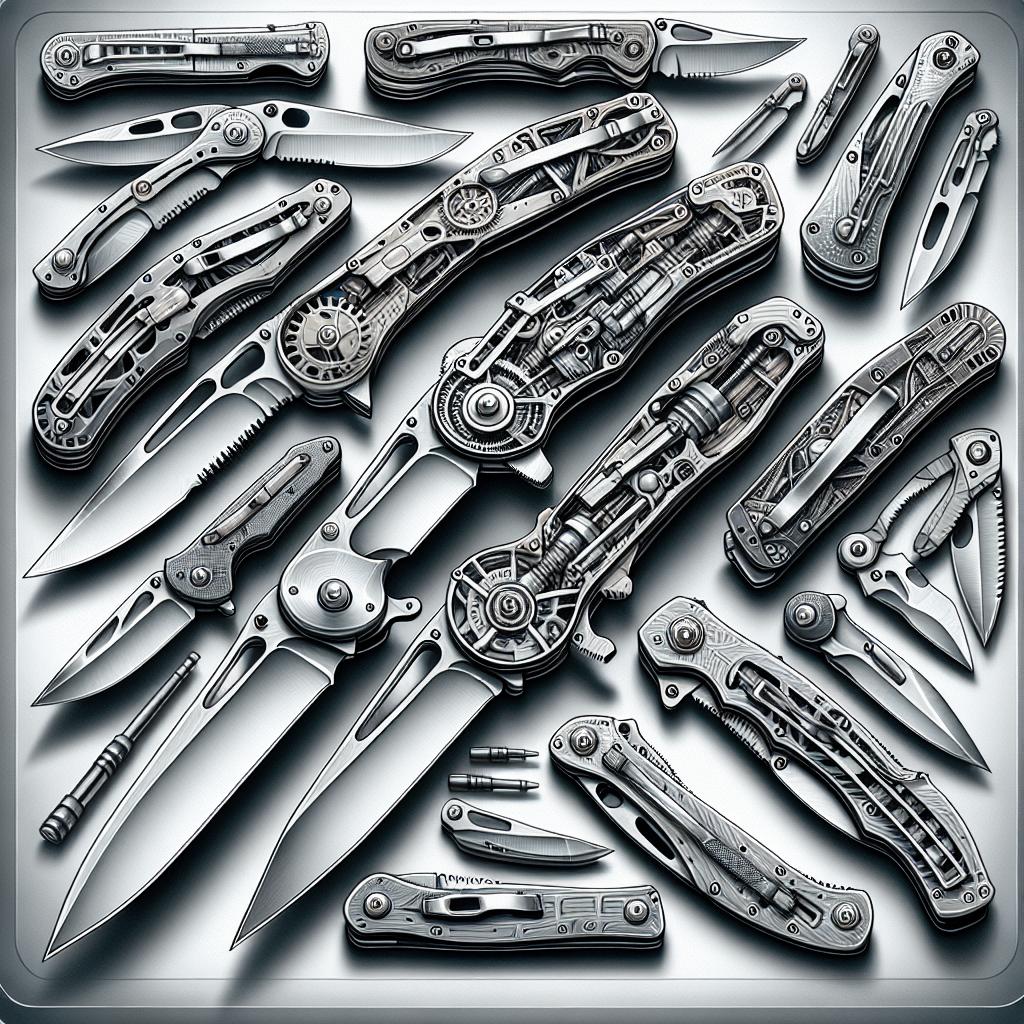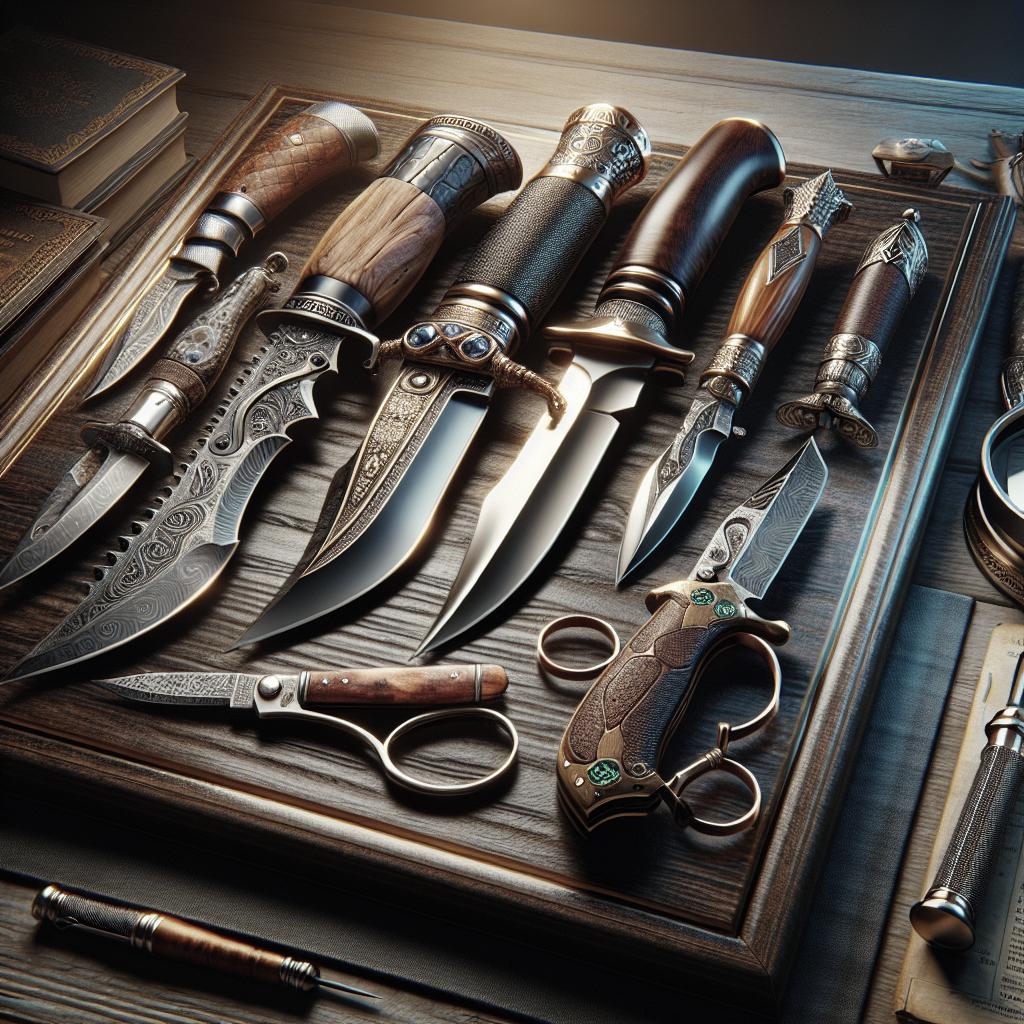Unique Folding Knife Mechanisms: A Comprehensive Guide
Folding knives are a staple in the lives of adventurers, outdoor enthusiasts, and everyday users alike. The versatility stems largely from their ingenious locking mechanisms, which ensure the blade stays secure when in use. This blog post delves into the unique mechanisms that make folding knives so compelling—from traditional back locks to modern frame locks. We’ll compare these mechanisms, explore notable brands associated with specific designs, and offer maintenance tips to keep your knife in prime condition. Whether you’re a collector or a casual user, understanding these mechanisms will enhance your appreciation for these portable tools.
Table Of Contents
-
Understanding Folding Knife Locking Mechanisms
-
The Liner Lock Mechanism Explained
-
Frame Locks – The Sturdy Choice
-
Back Locks – The Traditional Option
-
Slip Joints – Simplicity Meets Versatility
-
Exploring Other Locking Mechanisms
-
Notable Knife Brands and Their Locking Mechanisms
-
Maintenance Tips for Folding Knife Locking Mechanisms
-
FAQs in Relation to Folding Knife Locking Mechanisms
-
Why Not Check Out Our Other Great Blogs for Gear Recommendations and Outdoor Survival Tips
Understanding Folding Knife Locking Mechanisms
Folding knife locking mechanisms are designed to provide safety and convenience to users by securing the blade in its open position. These mechanisms vary widely, offering different levels of security, ease of use, and structural complexity. The choice of mechanism often depends on the intended use of the knife and personal preference.
Each mechanism employs different engineering principles, such as leverage, tension, and friction, to hold the blade in place. For instance, some mechanisms use a spring-loaded bar that snaps into place, while others rely on the geometry of the knife components. Understanding these differences can enhance usability and appreciation for these ingeniously designed tools.
The Liner Lock Mechanism Explained
The liner lock mechanism is one of the most popular in contemporary pocket knives, known for its reliability and ease of use. This mechanism features a metal liner inside the handle that moves into place behind the blade to lock it open. The user can close the knife by pushing the liner aside, allowing the blade to fold back into the handle.
This design is favored for its simplicity and for not requiring adjustments during use. Additionally, the liner lock often allows for one-handed operation, making it a practical choice for many users, particularly those requiring immediate access and closure, such as electricians or outdoor adventurers.
Frame Locks – The Sturdy Choice
Like the liner lock, the frame lock uses part of the knife to hold the blade open, but it differs in construction. In this case, the handle itself acts as the locking mechanism. When the blade opens, a portion of the frame moves into position behind the blade, providing a robust lock.
Frame locks are often constructed from sturdy materials such as titanium or steel, rendering them highly durable. This makes them ideal for heavy-duty tasks and environments where reliability is crucial. However, they may require more effort to disengage compared to other mechanisms, which can be a deterrent for some users.
Back Locks – The Traditional Option
Back locks, or lockbacks, are among the oldest types of locking mechanisms used in folding knives, revered for their simplicity and reliability. The mechanism involves a pivoting arm or spine that locks the blade when it is fully extended. The user must press on the spine to unlock and fold the blade back into the handle.
This traditional design is applauded for its automatic engagement and ease of use. While it may not support one-handed operation as easily as some modern locks, its secure engagement and simple construction make it a favorite among traditionalists and purists.
Slip Joints – Simplicity Meets Versatility
Slip joints differ from locking mechanisms as they do not actually lock the blade in place. Instead, they utilize a spring to create resistance against the blade’s spine, holding it in place when open or closed. The absence of a formal lock makes slip joints simple yet versatile.
Commonly found in Swiss Army knives and other multi-tools, slip joints are ideal for light tasks and everyday use. While they aren’t suited for heavy-duty applications due to the absence of a lock, their simplicity and ease of maintenance continue to make them a popular choice among knife enthusiasts.
Exploring Other Locking Mechanisms
Beyond the popular mechanisms discussed, there are numerous other innovative locking designs used in folding knives. Among them are axis locks, which rely on a small, hardened bar that locks the blade. Often found in premium knives, this type of lock allows for smooth opening and closing.
Another lesser-known mechanism is the button lock, which—true to its name—is operated by a button on the handle. Pressing the button disengages the lock, allowing the knife to close. Such innovations offer users a range of options suiting diverse requirements and personal preferences.
Notable Knife Brands and Their Locking Mechanisms
Some knife brands are synonymous with specific locking mechanisms due to their innovations and improvements in the field. Spyderco, for example, is renowned for its liner and compression locks, which are adaptations of traditional designs with improved security.
Kershaw is another brand celebrated for its frame locks, featuring precision engineering and design, while Benchmade is a prominent name associated with the axis lock, offering a smooth action and solid engagement. Exploring these brands can offer insight into which mechanisms might best meet your needs.
Maintenance Tips for Folding Knife Locking Mechanisms
Proper maintenance of folding knife locking mechanisms is vital to ensure safety and longevity. Regular cleaning, particularly of the moving parts, prevents dirt and debris from gumming up the works, contributing to smoother operation and a stronger lock.
Lubricating the pivot area and any moving parts periodically helps to maintain smooth action, but be sure to use a lubricant that is safe for use on metals. Finally, regularly inspect your knife for any signs of wear or damage, and address issues as soon as they arise to prevent accidents or further damage.
FAQs in Relation to Folding Knife Locking Mechanisms
1. Are frame locks better than liner locks?
Frame locks typically offer more strength and rigidity due to their construction, but the choice depends on user preference and the tasks the knife is intended for.
2. Can slip joint knives handle heavy-duty tasks?
Slip joint knives are generally not suitable for heavy-duty tasks as they lack a locking mechanism, making them better suited for light and everyday use.
3. How often should I service my folding knife?
Regular cleaning and servicing are recommended based on use. More frequently-used knives may require maintenance every few months, while others may suffice with yearly attention.
Why Not Check Out Our Other Great Blogs for Gear Recommendations and Outdoor Survival Tips
If you found this guide on folding knife mechanisms useful, you may enjoy our other blog posts. We cover a wide variety of topics, including gear recommendations, outdoor survival tips, and tech innovations. Our goal is to keep you informed and equipped with the best knowledge for your outdoor and everyday endeavors.
Summary of Main Points:
| Locking Mechanism | Features | Strengths | Notable Brands |
|---|---|---|---|
| Liner Lock | Metal liner locks blade open | Simple and allows for one-handed operation | Spyderco, Kershaw |
| Frame Lock | Handle acts as a lock | Durable and robust | Kershaw, Monolock |
| Back Lock | Pivoting arm or spine locks blade | Traditional and reliable | Buck Knives |
| Slip Joint | Spring holds blade open | Simple and versatile | Victorinox, Opinel |
| Other Locks | Axis, Button, and more | Variety of unique features | Benchmade, CRKT |


